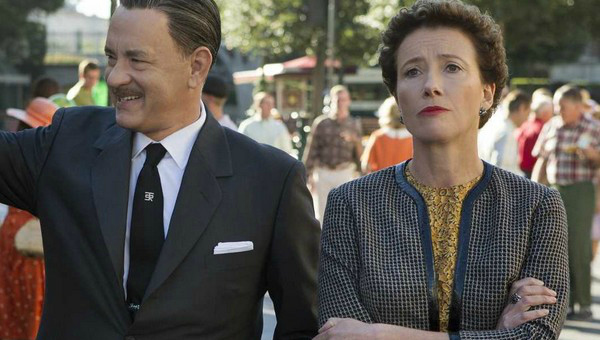 SAVING MR BANKS cleverly interweaves fiction and non-fiction in “the most delightful way” to tell the tale of how the perennial family favourite, MARY POPPINS, was created. The “factual” recount of how the classic film came into being in the 1960s is delivered through a combination of present day narrative and flashbacks to the childhood of the story’s writer, to provide insight into her inspirations. But, with considerable intertextuality between this story and the fictional story of MARY POPPINS it is difficult to tell where truth leaves the room and creative licence comes in.
SAVING MR BANKS cleverly interweaves fiction and non-fiction in “the most delightful way” to tell the tale of how the perennial family favourite, MARY POPPINS, was created. The “factual” recount of how the classic film came into being in the 1960s is delivered through a combination of present day narrative and flashbacks to the childhood of the story’s writer, to provide insight into her inspirations. But, with considerable intertextuality between this story and the fictional story of MARY POPPINS it is difficult to tell where truth leaves the room and creative licence comes in.
Following the credits, a tape recorded discussion between the Disney team and the novelist (which sounds remarkably like an earlier scene from the film) helps to provide some reassurance that the facts have been honoured in that aspect of the story. The childhood narrative, however, seems much more fanciful.
De-constructing the making of cinematic magic is an interesting and entertaining subject. We see the nuts and bolts of the creative process: the failed first drafts, the budgetary concerns and, at the forefront of this film, the power struggles over rights and interpretations. Tom Hanks (as Walt Disney, the film maker) and Emma Thompson (as P. L. Travers, the author) play two very different characters, both of whom rank among the most imaginative storytellers of the last century. Mrs Travers is stern, inflexible and emotionally constrained, while Walt is a romantic, whimsical extrovert with Peter Pan qualities; a man who sits behind a desk, surrounded by cartoon figurines, signing multi-million dollar contracts.
Disney and Travers have a challenging relationship as they come together to adapt her novel for the silver screen: he is constantly bending, she is inflexible. But despite Travers’ difficult nature, the film shows Disney’s fondness and respect towards her, inviting comparison to the relationship between Mary Poppins and Bert in MARY POPPINS. This is most noticeable when Disney and Travers sit on a carousel, Travers maintaining a stiff façade while Disney openly enjoys the fun of the fair.
The film explores the act of being creative, whether it is manifested either on the pages of a book or on film, and the way that imagination is inspired by experience. Although exaggerated here for creative effect, our relationships define us and the stories we tell, particularly those we enjoy (or don’t enjoy) with our parents. At the heart of the film is a study of the relationship that P. L. Travers and her father shared. As the title of the film suggests, he was the inspiration for the character of Mr Banks, and perhaps even the reason she wrote the book – to re-write history.
The cynical among us may view SAVING MR BANKS as a calculated move by the Disney camp to create some buzz around MARY POPPINS ahead of the anticipated 50th anniversary special editions. But it might be preferable to put that cynicism aside, jump through the chalk pavement picture and appreciate the supercalifragilisticexpialidocious.
httpvh://youtu.be/a5kYmrjongg

